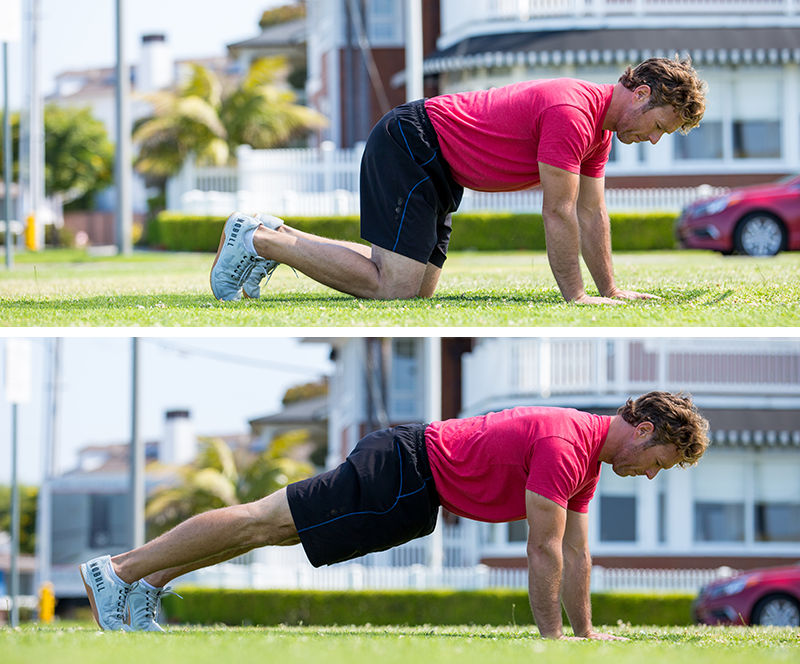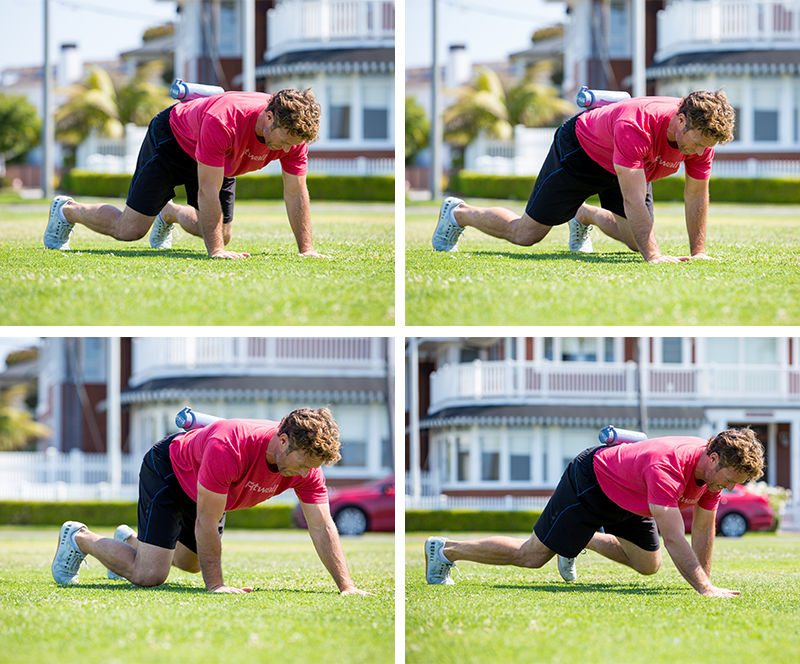Let’s talk about your abs. Six-pack abs are the result of the presence of muscle combined with an absence of fat. What many people don’t realize is that visible abdominal muscles are more the product of what happens in the kitchen and at meals versus what happens in the gym.
The rectus abdominis (the anatomical designation of the six-pack area) is crisscrossed by connective tissue, so your torso can move in different directions. This crisscross is responsible for the corrugated rippled look, and without it, the midsection would be difficult to bend, extend and twist.
When a well-established diet-and-exercise strategy for fat loss is followed, the amount of fat between the crisscrossed abdominal muscles and the skin decreases until the skin is sitting right on top of this crisscross. This is how six-pack abs are revealed.
Of course, training the abdominal muscles makes them more pronounced, so when fat decreases, they are even more visible. Training the abdominal muscles correctly can also help with posture, overall strength and even some aspects of mobility.
While good old-fashioned sit-ups and crunches focus directly on the abdominal muscles, progressing knowledge of anatomy and biomechanics has provided some even better exercise options to not only develop the abdominal muscles, but also improve strength and structure. Give these three abdominal exercise variations a try during your next training session, and be sure to support your efforts with good nutrition.
The Tension Plank

While the plank is a great exercise for the core, the tension plank is a more specific, focused and advanced approach to performing this basic exercise. In fact, this exercise teaches the entire body to integrate tension to support and stabilize. Improving your strength will, in turn, decrease your likelihood of injury.
Note: If you can hold this for more than 15-20 seconds when you start, you’re not doing it right!
- Begin in an “all-fours” position on the floor with your shoulders directly over your hands.
- Without changing the position of your shoulders over your hands or moving the position of your feet, bring your knees off of the floor into push-up position.
- From here, start creating and holding tension from your toes to the top of your head. Practice performing all of the following steps simultaneously.
- Imagine you are aggressively trying to pull your hands toward your toes and maintain this tension.
- Tense your calf and hamstring muscles simultaneously.
- Imagine your quad muscles tightening and being pulled up toward your waist.
- Squeeze your Kegel muscles as if you are holding your bladder.
- Tense your abdominal muscles as if you are bracing to be punched in the stomach.
- Engage your lat muscles to pull your shoulders down away from your ears.
- Push your palms into the floor to separate the shoulder blades as much as possible.
- Create tension through the triceps to keep the arms straight.
- Actively grip the floor with the hands.
- Create a “double chin” by retracting (not bending) the neck.
- Hold for 15-20 seconds while keeping the breath controlled through the abdomen, rather than the shoulders and chest area.
To ensure you are performing this correctly, have a partner “poke” the mentioned muscles to make sure they are rigid for the duration of this exercise.
The Bear Crawl

Contrary to popular belief, this exercise is more than a disciplinary tool for sadistic high school football coaches. When performed correctly, it’s an extremely intense abdominal strength and stability exercise that spares the spine and maximizes muscle.
- Begin in the “all-fours” position on the floor with the shoulders directly over the hands.
- Place a cone or other object on the small of your back.
- Bring the knees about 2 inches off of the floor, keeping even weight on the hands and feet.
- Keeping the knees and elbows aligned (don’t let the knees go outside the elbows) move the right arm/hand forward while simultaneously moving the left knee/foot.
- While this is happening, do not allow the hips to shift to either side, or rise up. If this happens, the object on the small of your back will fall.
- Continue forward in a “crawling” motion, alternating the above pattern.
- Feel as if you are driving your knees toward the floor, keeping them roughly 2 inches off of the floor at all times (this is important).
- Do not allow the hips to sway side to side or up and down.
- Repeat for 20-30 seconds with strict form.
- Maintain breathing through the abdomen and actively grip the floor with your hands.
As you’ll see, doing the bear crawl not only provides a core strength and coordination challenge, but it’s also great cardiovascular conditioning.
The Half Get-up

Many supine (lying on your back) abdominal exercises do a great job of targeting the intended muscles. Unfortunately, many of these exercises also create a large volume of repeated flexion at the lumbar spine. Because many lumbar injuries are due to too much unabated flexion, these exercises could be doing more harm than good in the long term.
The half get-up exercise makes it possible to engage the anterior abdominal muscles (the six-pack) while keeping a more natural alignment of the lumbar spine.
- Lie on your back on the floor with your legs slightly less than shoulder-width apart.
- Bend the right knee while keeping the foot on the floor.
- Reach toward the ceiling with your right hand, making the hand into a fist while the arm is completely straight, perpendicular to the torso.
- Keep your eyes on your fist.
- The left arm on the floor should be straight, at a roughly 45- degree angle from the body, with the palm and arm pressed into the floor.
- Begin lifting the right shoulder blade off of the floor by “reaching” straight up (do not allow the hand to come across the body) at the ceiling with the right fist.
- As the hand moves toward the ceiling, the chest should rise while the left hand presses into the floor; you’ll end up on your left elbow.
- Keep looking at your right hand and transition from the left elbow as a support to the left hand as a support with a straight arm.
- Keep the chest high while reaching the right fist straight at the ceiling.
- Once the torso is extended as high as possible while keeping the left hand on the floor, return to the left elbow and then back to the starting position.
- Repeat 10 times on each side of the body.
- Once a consistent movement pattern is established, add a dumbbell, kettlebell or other form of resistance to the hand reaching toward the ceiling.
Use these three abdominal challenges to strengthen these important muscles so you can look, feel and move better every day.




 by
by 








 by
by